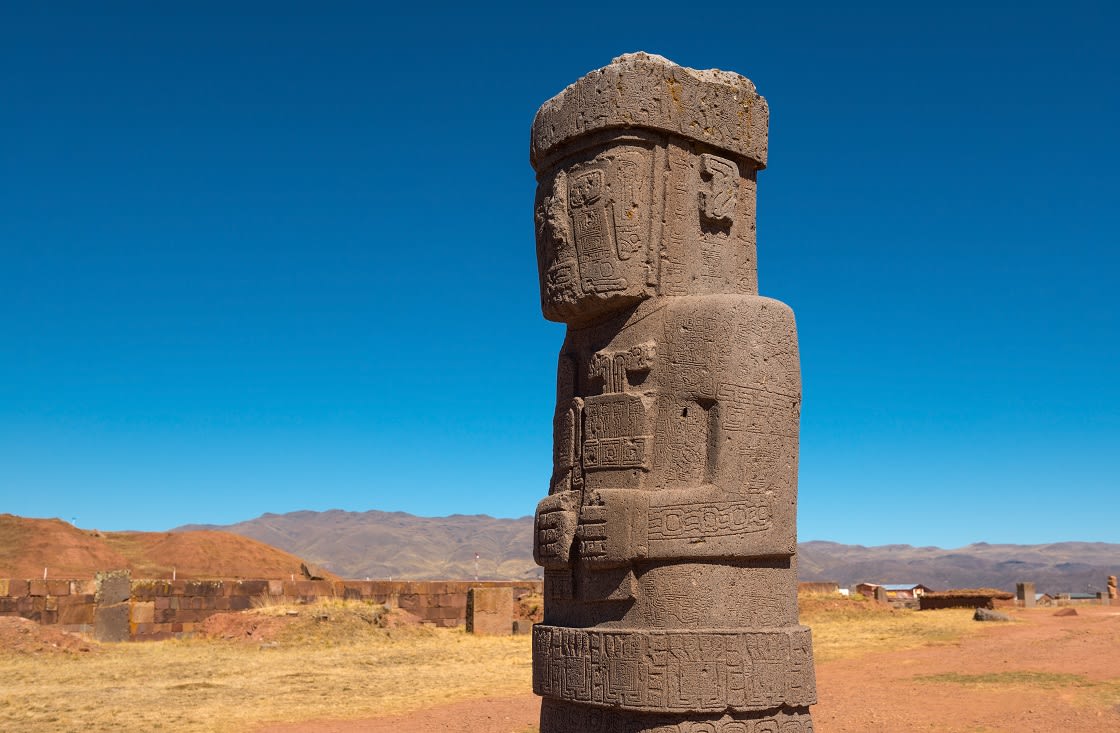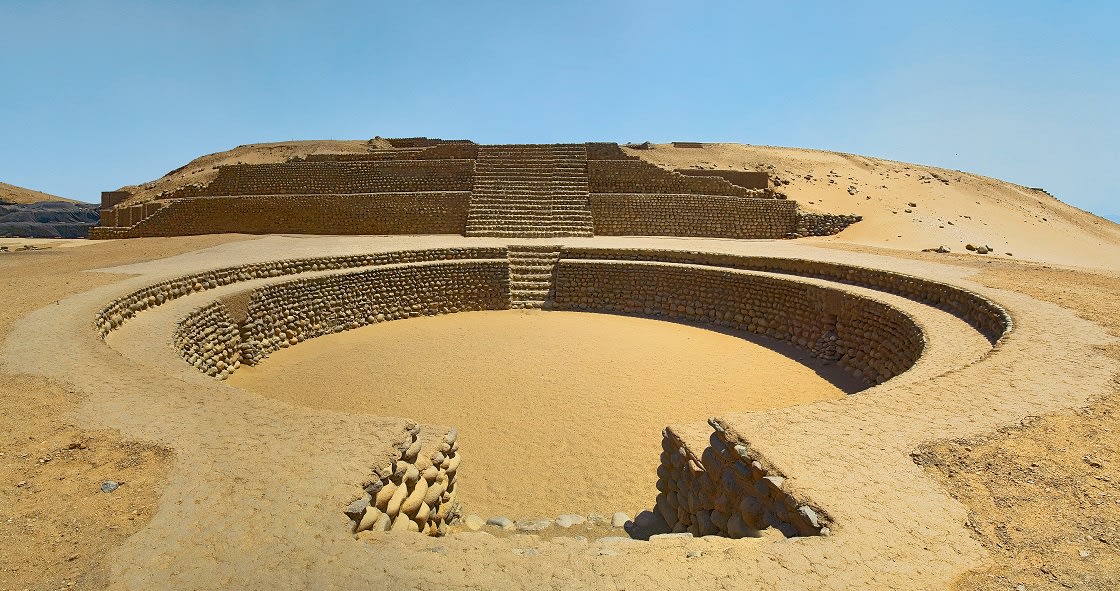
South America is home to sweeping coastlines and lush riverbeds that have made it a cradle of civilization since ancient times. Societies were able to access water, grow food, and flourish. Taking a trip along the rivers of Peru, Brazil, and Ecuador is like taking a step back through history, giving you direct contact with the world of our ancestors. Read on to learn a little bit more about the region’s rich past.

Remains of Caral, North of LIma – Peru
Peru has been home to a number of ancient Andean civilizations over the years thanks to its proximity to both the ocean and lush mountain forests, offering an abundance of essential resources to local communities. The Norte Chico civilization, or the Caral, was the first civilizations to arise along the northern coast of Peru. This complex pre-Columbian society is one of the oldest known cultures in the Americas and prospered between the 30th century and the 18th century BC.
After the Caral came the Moche civilization, which flourished in northern Peru between 100 AD and 800 AD. This society wasn’t a civilization in the traditional sense, but rather, is thought to have been a group of autonomous communities that shared an overarching culture. You can see common themes in their art and architecture that point to a common mythology and belief system. The Moche people are perhaps best known for their unique painted ceramics and gold metalwork.
The Chachapoyas, also known as the ‘Cloud People’, were an ancient civilization that lived a little bit further from the coast. They relied on the bounty of rivers running through the mountains of what is now northern Peru. The emergence of the Chachapoyas dates back to somewhere between 200 BC and 700 AD, but they were wiped out by the Inca empire in the 1500s.

Serra da Capivara National Park, with prehistoric rock paintings, Brazil
Before its discovery by the Europeans, Brazil was home to thousands of hunter-gatherer tribes that primarily lived in the forest and along rivers. Though these tribes didn’t leave behind much in the way of architecture, the Amazon basin of Brazil is rich with archaeological gems. The oldest pottery ever discovered in the Western hemisphere was found here and dates back an impressive 8,000 years. Archeologists have also found other evidence of a rich culture, including jewelry, figurines, and more.
Early on in its history, Ecuador was primarily home to hunter-gatherers. It didn’t see its first major civilization arise until around 3500 BC when the Valdivia created a small city whose remains can be seen to this day. They were among some of the first societies in the Americas to start using pottery and had sophisticated maritime technology that allowed them to establish extensive trade networks.
After the Valdivia, the Machalilla people took over the area and converted it to a farming settlement. This civilization flourished until around 1000 BC, when the Chorrera empire took over. Ecuador continued to see civilizations wither and get reborn for the next 500 years, until the invasion of the Spanish empire.
South America is home to a rich history that stretches back thousands of years. If you travel along coastlines and rivers, you can see the remains of what were once great civilizations that led to the world we know today. For more information about booking a tour in South America, please contact us or call 1-888-215-3555.
Guest Post kindly submitted by: Jackie
While Rainforest Cruises aim to provide accurate and up-to-date information, we make no representations as to the accuracy or completeness of any information herein or found by following any link on this site. Rainforest Cruises cannot and will not accept responsibility for any omissions or inaccuracies, or for any consequences arising therefrom, including any losses, injuries, or damages resulting from the display or use of this information.




